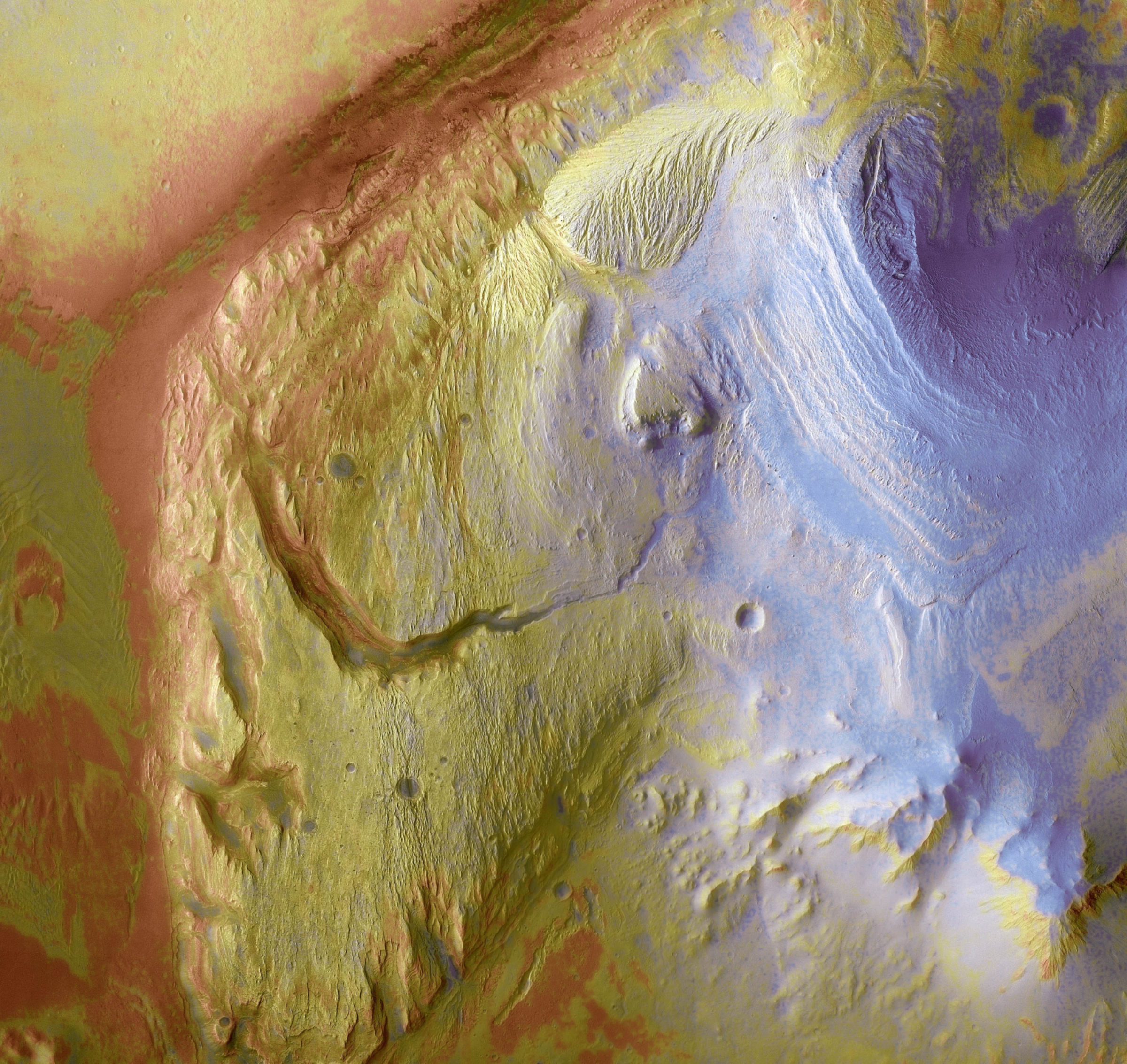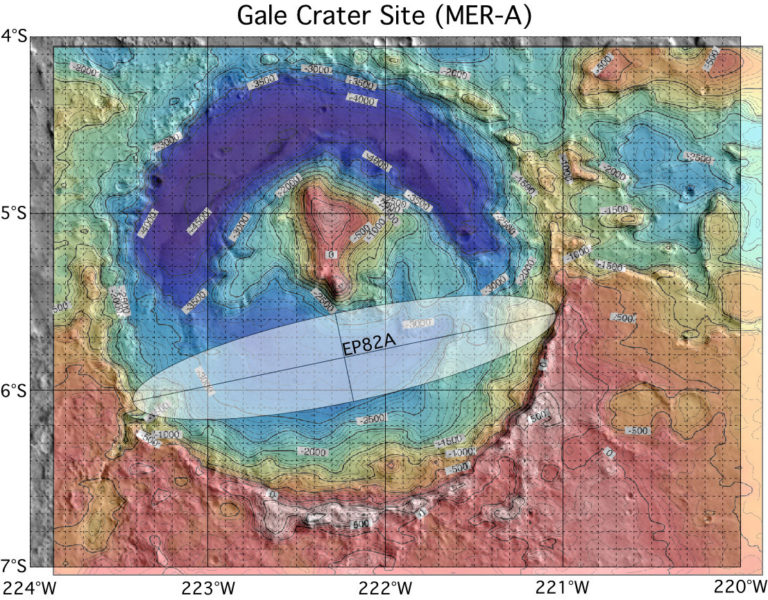Emily Lakdawalla • May 26, 2006
An Odyssey THEMIS image of Gale Crater, Mars
This week's releases from the Mars Odyssey THEMIS team included a gorgeous one of the layered interior of Gale crater. First of all, here's a quick context image pulled from Google Mars, which is convenient because it can display the map using some of the same THEMIS imaging data:

And here is the lovely new THEMIS image. A warning: if you click to enlarge, it's 2 Megabytes. I'll post some full-resolution detail views below for those of you who won't be able to download the whole thing. What we are looking at is a piece of the layered deposits from the middle of the crater. You can see where it fits into the context image above by matching that dark channel that arcs across the center left of the image.


I think these THEMIS images are just beautiful -- I'd like to see an exhibition of them blown up and hanging on the walls of a gallery.
One reason that Gale is exciting is because it was one of the candidate landing sites for the Mars Exploration Rovers; we might have landed there instead of at Gusev. Here's a map:

But it was eliminated fairly late in the landing site selection process. I don't remember the exact reason that Gale didn't make the cut; it might be that they just couldn't squeeze the MER landing ellipse inside it (meaning that there was too much chance the rover could land in a spot dangerously close to steep crater walls), or there could have been questionable winds within it, or too much dust, or too many rocks. But it was an awfully close thing, and it looks like it would have been a great place to explore with a rover. According to the THEMIS team caption that accompanies this image release, Gale is now being considered again as a possible landing site for the 2009 Mars Science Laboratory.
I very much wanted to attend the first meeting of the Mars Science Laboratory landing site selection committee, which will take place late next week. Unfortunately, it overlaps with my 10th college reunion, which I'm going to instead. I was fortunate enough to attend the MER landing site selection meetings, and it was fascinating to watch the entire Mars community openly propose, debate, investigate, and eliminate candidate landing sites. I wrote an article about that in the May/June 2003 issue of The Planetary Report. If you're a member you can download the article in the For Members section of this site. Hopefully I'll get to attend future meetings.
Support our core enterprises
Your support powers our mission to explore worlds, find life, and defend Earth. You make all the difference when you make a gift. Give today!
Donate

 Explore Worlds
Explore Worlds Find Life
Find Life Defend Earth
Defend Earth


